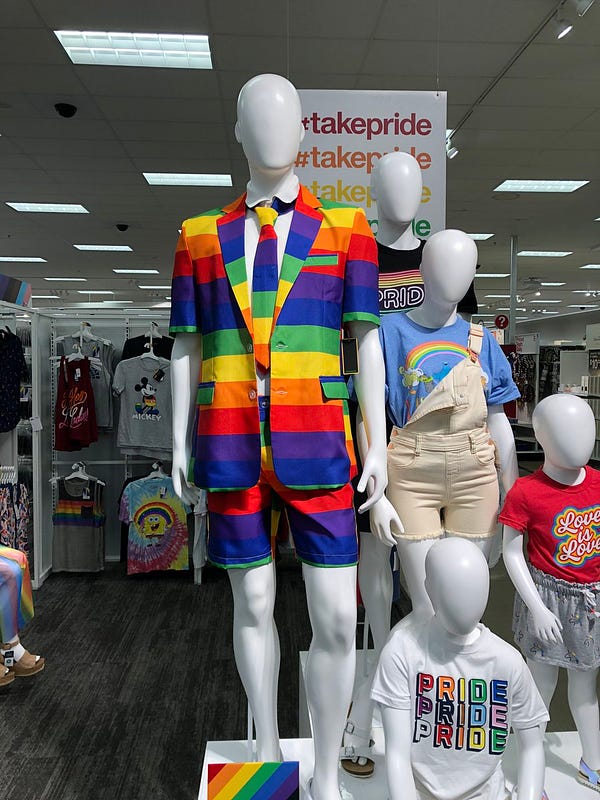'Rainbow Capitalism' or Not, Pride Collections Are Everywhere
Pride marketing faced harsh scrutiny in 2021. Yet in 2022, Pride collections are just as rampant as ever.
Thank you for subscribing to Back Row! If you like this newsletter, please forward it to friends. Because if Back Row keeps growing, it keeps going! Also, don’t forget to buy my NYT bestselling book ANNA: The Biography. I know the internet had great fun over her go-to lunch, which was a single sentence in the book. Imagine what fun all those other sentences hold? But seriously, while this newsletter is free to read, buying the book is the best way to support it. If you are new here, subscribe to get more posts like this delivered to your inbox around twice a week.
*Note: Today’s post is too long for email, so read it in the Substack app or tap the headline to read it in a browser.*
It’s that time of year, when seemingly every corporation that can slap a rainbow on something and label it “Pride” goes forth and does just that. Over the weekend, I got an email from Bombas, the sock company, about their Pride collection, including things like a “Pride tank and ankle sock 7-pack” ($103.50).
Pride merchandise now floods store websites each June as reliably as corporations that render their logos in rainbow until July 1, at which point they go right back to their usual colors. Pride collections came under increased scrutiny last year, as consumers called companies out for “rainbow capitalism” — a shameless and disingenuous ploy for sales without showing up for the LGBTQ community in ways that could more meaningfully help it, which go beyond pushing rainbow $100 sock packs during one specific month of the year. People like Chris Stedman also pointed out that some of this so-called Pride apparel is just plain hideous.
From a June 2021 Guardian story:
Chris Stedman, author of digital anthropology book IRL (in real life), went viral online after singling out US store Target for its “ugly as sin” attempt to bandwagon on Pride month. Speaking to the Observer, he said: “The reason this stuff often feels like such a violation to many of us is that the language these brands are slapping on to mugs emerged in spaces we built for ourselves because we weren’t welcome elsewhere.”
Often, the collections feel inauthentic and appropriated, robbing the community of their agency, he said. “Our in-group language and imagery evolved as a way for us to care for ourselves. So to have it used by brands that have little to no stake in our wellbeing feels like it cheapens and ultimately ‘defangs’ the language that we have used to empower ourselves. They think, ‘hey, we can just slap some rainbows on this and call it a day’. It’s dehumanising.”
Many of these Pride collections come with a promise that the brand will make a donation to one or more organizations that help LGBTQ people (though obviously those donations could be made without companies selling stuff; consumers could also simply make donations instead of buying stuff).
Keep reading with a 7-day free trial
Subscribe to Back Row to keep reading this post and get 7 days of free access to the full post archives.






